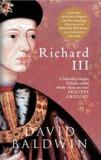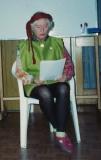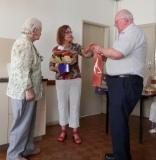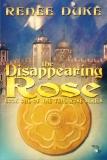Book Review: R ichard III by David Baldwin
ichard III by David Baldwin
David Baldwin, Richard III. Amberley Publishing, 2012. ISBN 9781445601823
This review was presented at NSW Convention in Mittagong in May 2012. We apologise for the delay in posting it.
Richard III by David Baldwin was published on 28 February 2012, so well before the remains of Richard III were found where they had been buried in the church of the Leicester Greyfriars. However, it should not be forgotten that Baldwin had as early as 1986 published the hypothesis that his remains were still where they had originally been buried, [1] I had ordered the book as soon as it came out, expecting some new insights. Once I had received it and saw the endorsement by Philippa Gregory on the back, I started wondering though, whether I had not made a huge mistake.
The subtitle is “Ruthless hunchback or paragon of virtue, the true story of the last Plantagenet king”, which does reflect what Baldwin sets out to do. As he explains in his Introduction “It seems improbable that any human being could be as evil – or alternatively as misunderstood – as Richard, and … somewhere behind all the conflicting argument stands a real man who had both qualities and failings. Neither black or white, but – like all of us – somewhere in between”. [pp.10-11] An admirable aim, but we’ll have to see whether he can achieve it.
Baldwin follows a chronological approach. Starting with Richard’s birth and finishing after Bosworth with a chapter on “Legacy & Legend”. On the whole he is reasonably fair, the chapter on Richard as Warwick’s heir in the North is a case in point. Richard has often been blamed for being excessively aggressive in extending his interests during this period, but Baldwin puts this into its historical context and shows that Richard’s behaviour was just normal. He was no worse than others, but as the king’s brother he had obviously more scope for extending his interests, though they were not necessarily to the detriment of others. Baldwin also stresses that this was not only the normal behaviour for a medieval nobleman, but would also have been expected of him.
While I have some reservations about Baldwin’s analysis of how Richard III came to the throne, it has to be said that this is unquestionably a period on which views are at their most partisan. I found his heavy reliance on Thomas More – strawberries and all – and Mancini somewhat limiting, especially – as we shall see later – considering Balwin’s view on the legends surrounding Richard. He does, however, reject the notion that the crown was what Richard had always wanted, but rather that “he was seizing an opportunity rather than fulfilling an expectation”. [p.104]
On the question of the fate of the princes, Baldwin thinks that the elder, Edward, died of natural causes, while the younger, Richard, survived. This comes as no surprise, considering that he wrote The Lost Prince five years previously, where he set out to show that the mysterious Richard of Eastwell was in reality the younger son of Edward IV.
Baldwin shows that Richard’s reign was always rather insecure, which was why a nobody like Henry Tudor could actually manage to overthrow him and stay in power. He explains that Richard’s legacy are the progressive laws of his only parliament, which “affected the lives of Englishmen far into the future”. [p.216] He concludes that “Richard’s achievements are arguably greater than those of some kings who reigned for longer, and there are indications that they would have been greater still if he had been allowed more time” [p.219]
As for the legends surrounding Richard I agree when he says that “It was perhaps inevitable that a king who both gained and lost his throne in such dramatic circumstances would be become the stuff of legend” [p.228], but that these do not tell us anything about him personally.
On the whole I think Baldwin does quite a good job at showing Richard as a “man who is … both principled and unprincipled, a flawed diamond” [p.228] I don’t think that he offers much new for someone who knows the period reasonably well, but would be a good introduction.
It is a pity, however, that Baldwin occasionally adopts a fictional approach. This begins in Richard’s childhood when we meet a boy at Fastolf Place, who “eagerly anticipated trips into the bustling city [ie. London] beyond the wall”. [p.17] Later, during the dramatic events of May/June 1483, we learn that “Richard … worried constantly about the future, searched his conscience many times over”. [p.99]. Obviously we have no idea how Richard felt and assumptions like these, which do nothing to explain the events, have no place in a work of non-fiction.
With some reservations I can recommend this new book on Richard, though I would not class it as “must read”.
[1] David Baldwin, ‘King Richard’s Grave in Leicester‘, Transactions of Leicester Archaeological and Historical Society, Vol. 60 (1986), pp.21-24
Tags: Books, Conventions, NSW Branch, Richard III


 ichard III by David Baldwin
ichard III by David Baldwin




